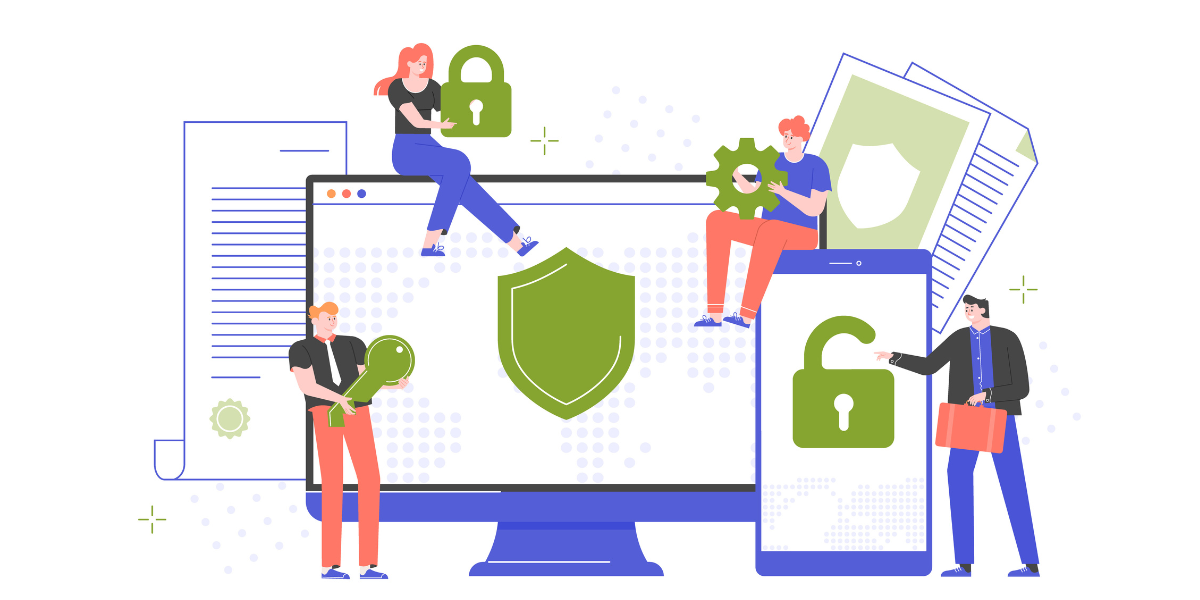In today’s digital world, cybersecurity threats are evolving faster than ever. Yet despite advanced firewalls, encryption systems, and AI-powered detection tools, the weakest link in cybersecurity remains the human being.
According to the Cybersecurity and Infrastructure Security Agency (CISA), over 90% of successful cyberattacks begin with some form of human error from clicking a phishing email to using weak passwords.
This phenomenon, known as the human factor in cybersecurity, reveals that technology alone cannot secure organizations unless people are trained, aware, and vigilant.
Table of Contents
Why Human Factor is the Biggest Cybersecurity Vulnerability
Cybersecurity isn’t just about computers; it’s about the people who use them. Every employee with access to data or a network is a potential target for attackers.
Hackers understand that manipulating human psychology is often easier than breaking through digital defenses. As IBM’s 2024 Data Breach Report found, social engineering attacks such as phishing remain the top cause of breaches globally.
The reason is simple: humans are emotional, curious, and trusting and cybercriminals exploit these traits masterfully.
Common Human Factors That Lead to Cyber Breaches
1. Falling for Phishing Scams
Phishing is the most common cyberattack targeting individuals. Attackers send fake emails or messages posing as trusted entities like banks, coworkers, or government agencies to trick people into revealing login credentials or downloading malware.
According to Proofpoint’s 2025 Human Factor Report, over 75% of organizations faced targeted phishing attempts in the past year, with many leading to data breaches.
2. Weak or Reused Passwords
Despite constant warnings, many users still rely on simple or repeated passwords like “123456” or “password”.
Hackers use automated tools to crack weak credentials instantly. Using multi-factor authentication (MFA) significantly reduces this risk, yet only a fraction of users enable it.
3. Neglecting Software Updates
Many employees ignore software update notifications, unaware that patches often fix critical security flaws. Outdated software is one of the easiest targets for attackers looking to exploit known vulnerabilities.
4. Accidental Data Sharing
Uploading sensitive files to public drives, sending documents to the wrong email, or discussing confidential topics on unsecured apps all can lead to unintentional data exposure.
5. Insider Threats
Not all breaches come from outside. Disgruntled employees or those with excessive access privileges can intentionally or accidentally leak information.
The Psychology Behind Human Mistakes
Cybersecurity breaches often exploit human factors like emotions rather than systems. Hackers design scams to trigger feelings like fear, urgency, or curiosity.
For example, a phishing email might say, “Your account will be suspended click here to verify!” This pushes users to act impulsively without verifying authenticity.
As Harvard Business Review notes, even highly trained professionals can fall for scams if they are stressed, distracted, or overconfident in their ability to detect them.
Building a Cyber-Aware Workforce
Technology can only go so far true cybersecurity begins with culture and awareness. Here are proven strategies to reduce human error:
1. Regular Cybersecurity Training
Conduct ongoing training sessions that simulate real attacks (like phishing tests) and teach employees how to spot threats.
According to CISA’s Workforce Awareness Guide, regular training can reduce human factor related incidents by up to 70%.
2. Promote the “Think Before You Click” Mindset
Encourage employees to verify links, attachments, and requests before acting. Small habits like double-checking sender addresses can prevent massive breaches.
3. Implement Role-Based Access Control (RBAC)
Limit access to sensitive data only to those who need it. The fewer people with access, the lower the risk of accidental leaks.
4. Adopt Strong Authentication Practices
Use MFA, biometric logins, and password managers. These steps make it harder for attackers to use stolen credentials.
5. Encourage a No-Blame Reporting Culture
Many employees fear reporting mistakes. Creating an open environment where errors are reported immediately can help mitigate damage early.
The Role of Leadership in Cyber Resilience
Cybersecurity isn’t just an IT issue it’s a leadership responsibility. Executives and managers must lead by example, invest in awareness programs, and ensure every employee understands their role in protecting data.
IBM emphasizes that organizations with strong security cultures recover from breaches 40% faster and experience fewer long-term damages. Building that culture requires empathy, accountability, and constant learning.
The Future: Human + AI Collaboration
While humans are the weakest link, they can also become the strongest defense when empowered by AI-driven security tools.
Modern cybersecurity platforms use AI to detect unusual behaviors, alert teams in real time, and automate threat responses. Yet these systems still rely on humans to interpret, act, and adapt.
The future of cybersecurity lies in human-AI collaboration where machines handle detection speed, and humans provide judgment and ethical decision-making.
Conclusion
No matter how advanced technology becomes, cybersecurity will always depend on human behavior. Firewalls can block attacks, but they can’t stop someone from clicking a malicious link or sharing sensitive data.
Organizations that prioritize awareness, training, and culture will stay resilient in an era of increasing cyber threats.
The strongest defense isn’t just code it’s people who understand the value of security and practice it daily.


1 thought on “Human Factor – Powerful Breaches Start with People – 2025”